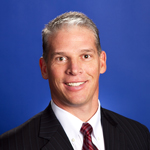After a number of difficult years, including a Chapter 11 reorganization, Harry & David Holdings is rebuilding its brand as the first choice for gifting and everyday delights. Founded as a premium fruit company in 1910, Harry & David was plagued by problems leading up to its May 2011 bankruptcy. Foremost, says CFO Michael Schwindle, was a multiyear decline in sales trends and lagging operational discipline, but that was compounded by leverage and the recession of 2008. “There were a lot of challenges at a sensitive time,” says Schwindle, who was recruited soon after the company emerged from bankruptcy in September 2011 by CEO Craig Johnson, with whom he had worked previously at Musician’s Friend, then the world’s largest online retailer of musical instruments.
Tasked by the Harry & David board of directors with restoring the company to growth, the new leadership team first looked at the company’s online presence. “It had made the transition to the Internet, but not to e-commerce, which is more complex than putting a site out on the Internet,” says Schwindle. “It involves a complex series of marketing techniques that reinforce and support one another.”
As an example, Schwindle points to disciplines around user experience—monitoring where customers are coming from, how they progress through a site, and why they end up leaving or buying—that simply didn’t exist within the company. “We have a very large list of customers, and making sure you understand those customers and segment them properly is a critical discipline,” he says.
Key to building the company’s e-commerce platform was injecting the right talent, which, in addition to Johnson and Schwindle, includes CIO Charles Hunsinger, senior vice president of merchandising Jackie Ardrey, and senior vice president of marketing John Bancroft, who ran Toys R Us Japan and was the architect behind the launch of several e-commerce sites for VF Corporation. “We’ve built a team that has deep e-commerce expertise,” Schwindle says. “All together, we’ve returned to growth, moving our customer file, the people who buy from us, to its first double-digit growth and multi-year growth in a long time.”
In the retail segment, the company also made a change, focusing more on seasonal stores. “You have to be out where the customer is when [the] customer is ready to shop,” Schwindle says. “Our business today is gifting-centric, and gifting is heavily concentrated between Thanksgiving and Christmas.” In 2012, the company deployed 15 stores, both pop-ups—temporary in-line stores—and kiosks—fixtures in mall walkways. The pop-ups generated some of the highest per-store performance in the industry, and kiosks came close to the industry average, which Schwindle says was stellar the first year out of the gates. In the 2013 holiday season, Harry & David more than doubled the number of its seasonal stores to 33 and continued to see strong sales.
Given the difficulty of finding seasonal associates with the product knowledge necessary to market a premium brand, Schwindle sees the concept expanding into a hub-and-spoke model. “In a given market, we will have one or two full-year in-line stores, blooming up to 5–10 additional seasonal stores in November and December,” he says.
Other strategies, says Schwindle, involve developing assortments for wholesale customers such as Macy’s, Kohl’s, and Barnes & Noble, which can then be ambassadors for the Harry & David brand, as well as aggressively growing business-to-business sales. “Many companies continue to give gifts to employees and clients, and we offer a type of gift that few others can,” says Schwindle.
One element of the company’s success is building strong partnerships between finance and the rest of the organization. “It stems from broad fiscal discipline and the principle that numbers are a function of activity,” Schwindle says. “We want to ensure that everyone has a command of the activity going on within the business, so members of my team are fully embedded in the business, reporting functionally through my organization but working shoulder to shoulder with employees in different operational areas.”















